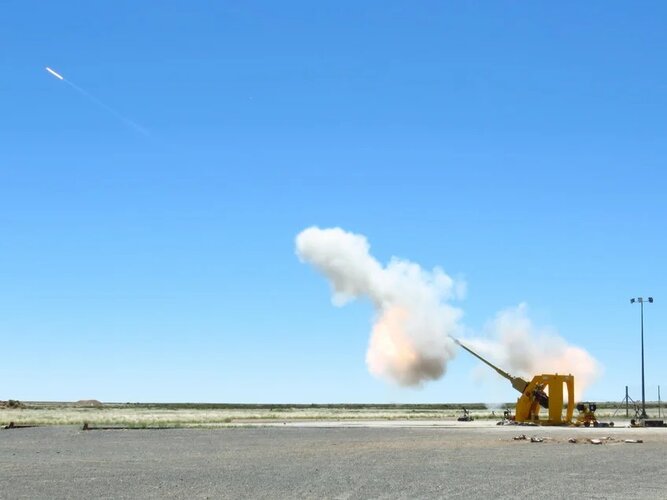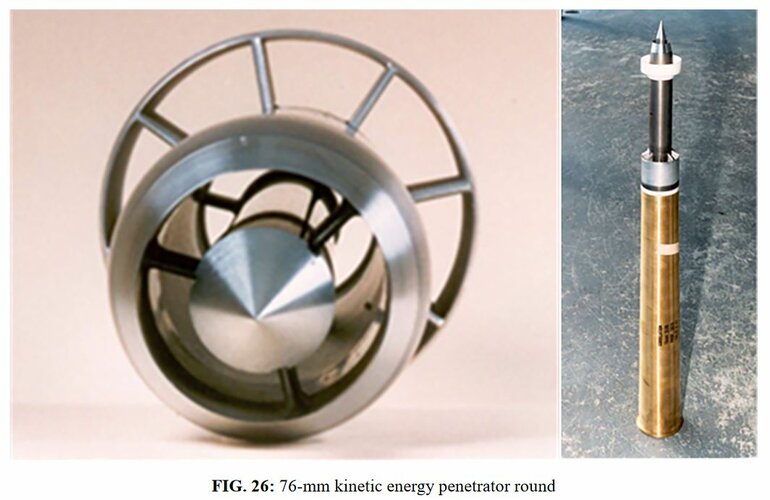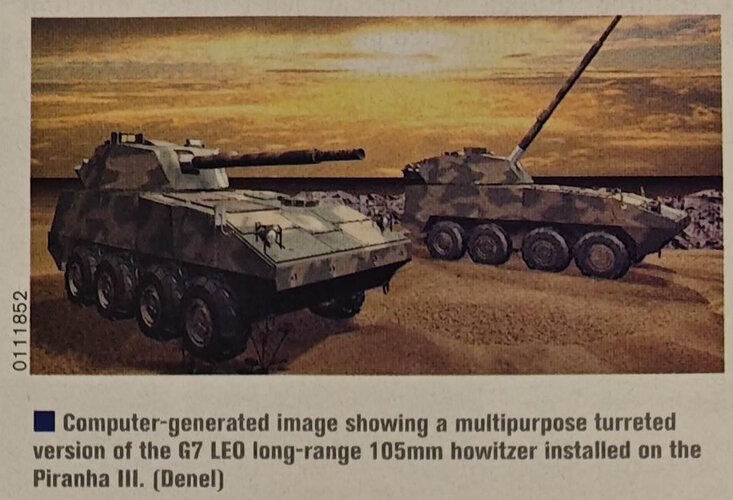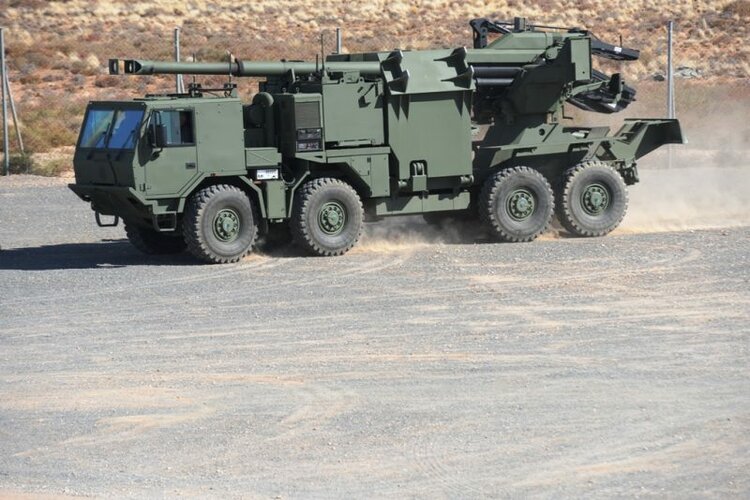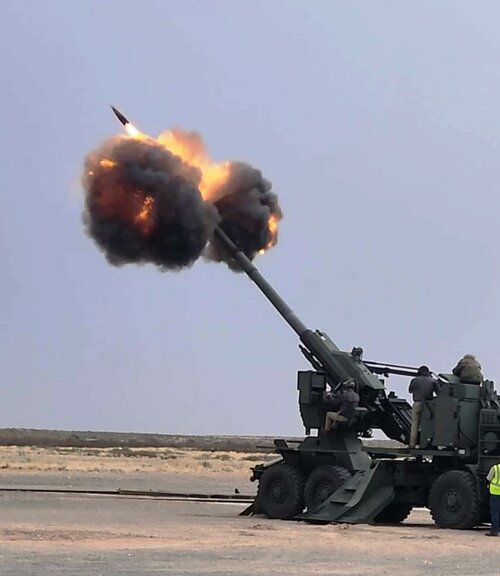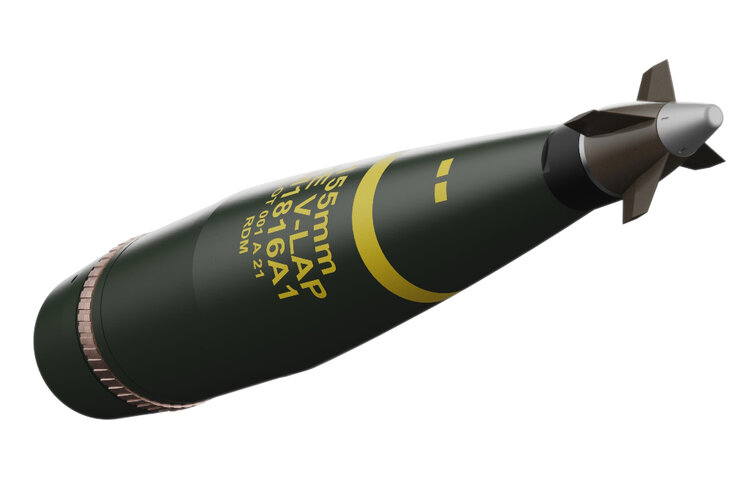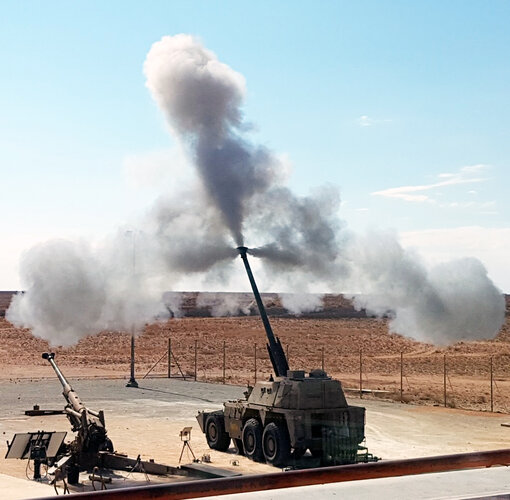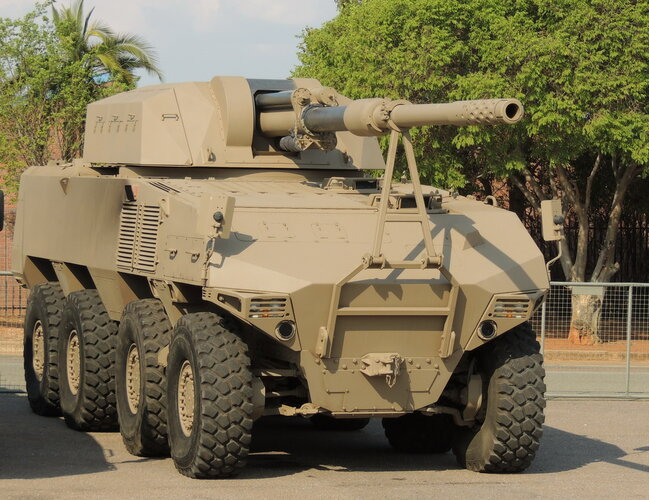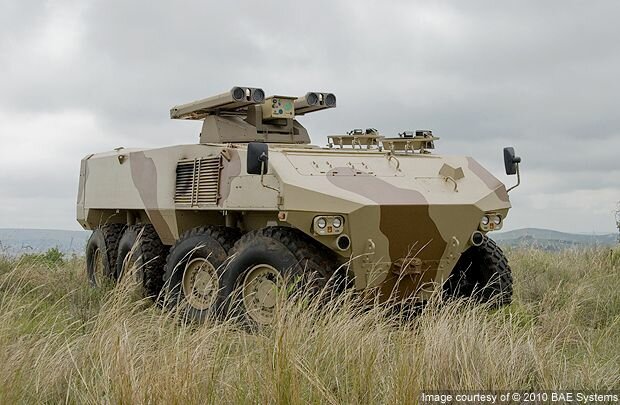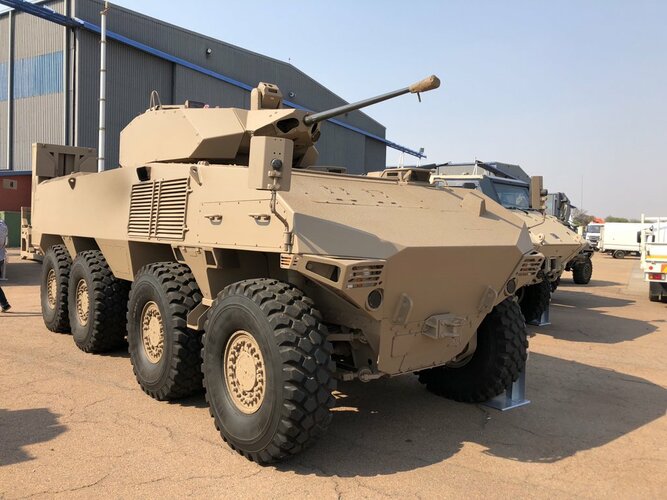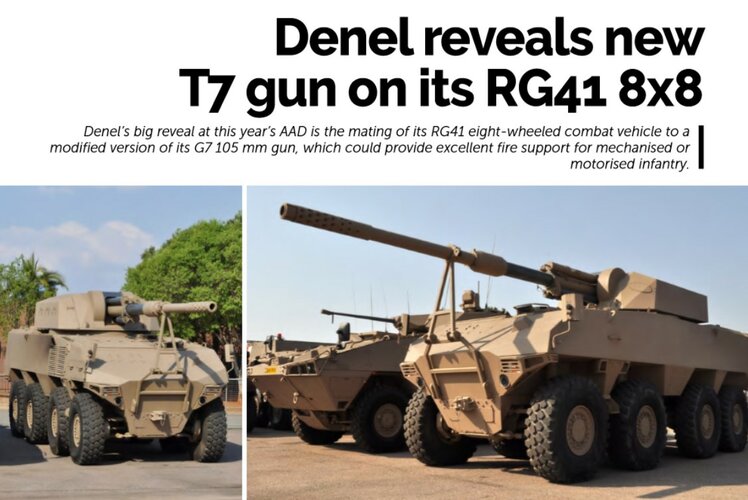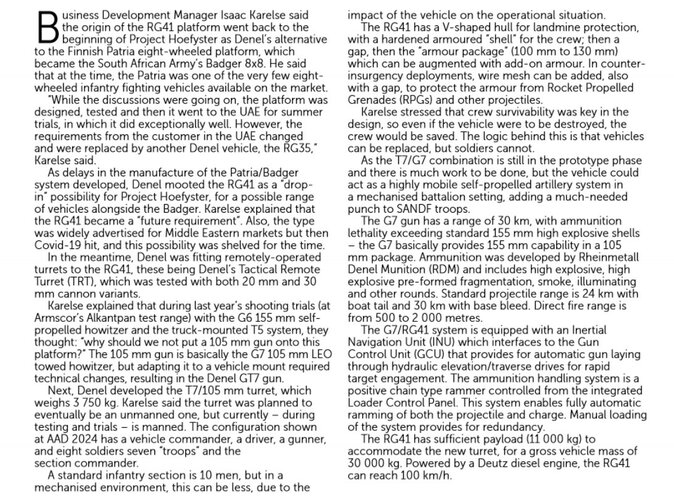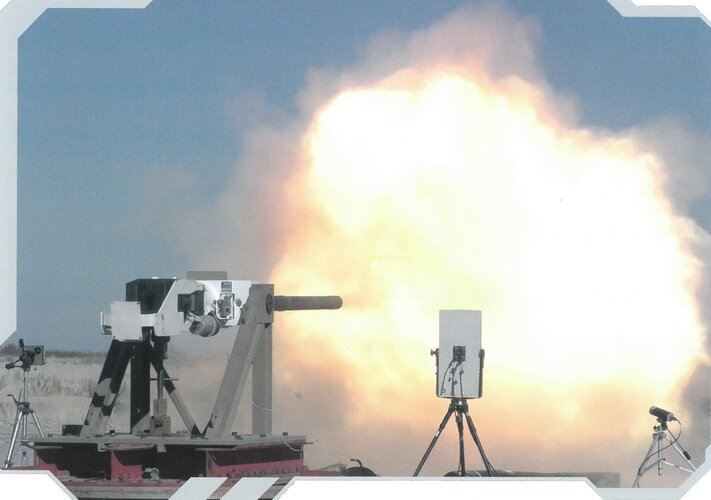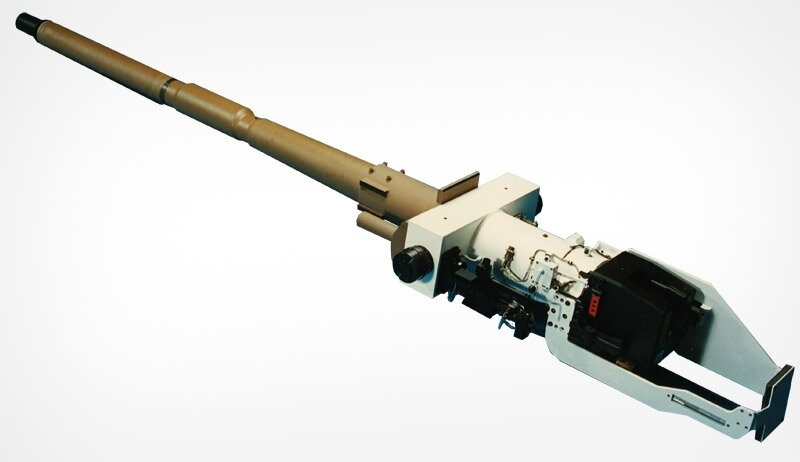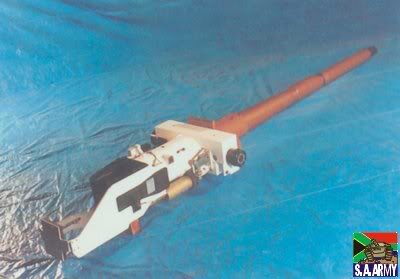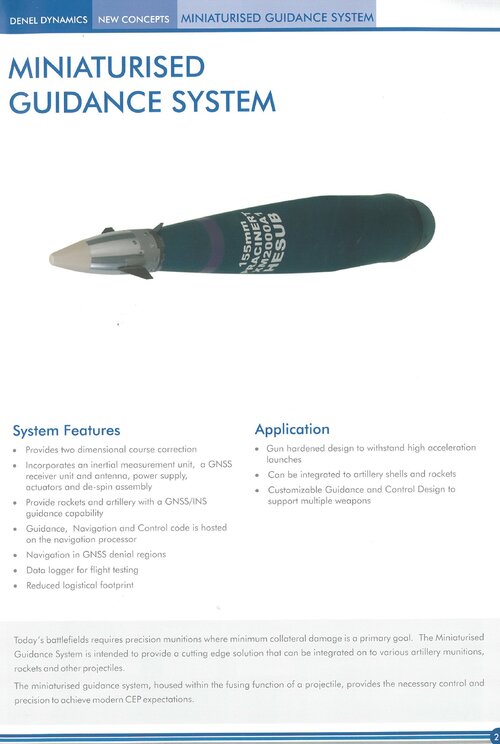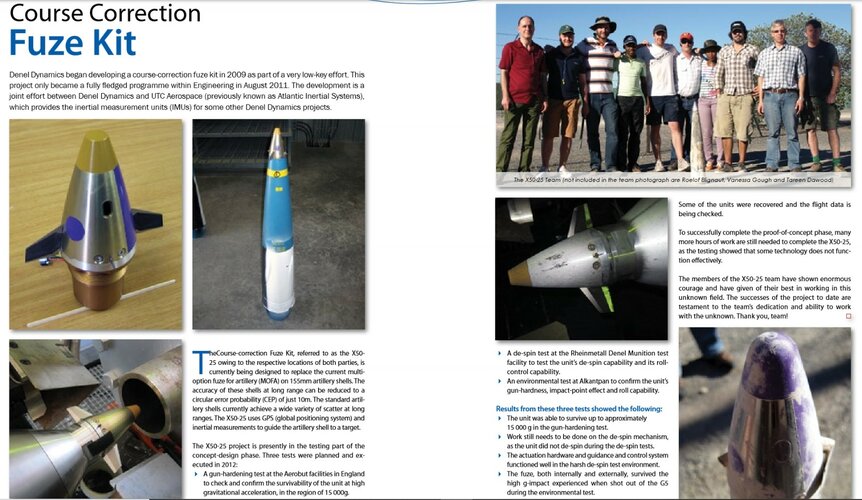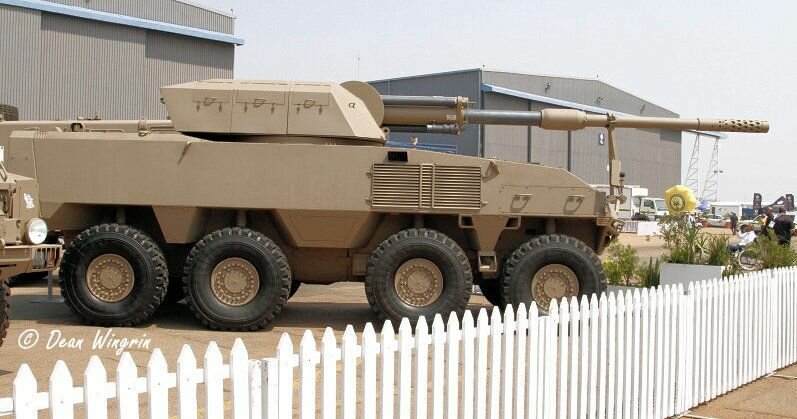Agreed.. an absolutely fantastic description of one of the best and critical Israeli Jewish newspapers - they still have the courage to tell truths that are not pure propaganda in Israel ... geetings from a reader of HaaretzThe book The Israeli Connection has been totally discredited by anybody with knowledge of Israel. It is a book about how Israel has a conspiracy to control the world via arms sales.
Ha'aretz is consider a bit less reliable than Al Jazeera - they are well known for inventing 'history'.
Anything associated with them should be taken with a huge grain of salt.
You are using an out of date browser. It may not display this or other websites correctly.
You should upgrade or use an alternative browser.
You should upgrade or use an alternative browser.
South African artillery/cannon/guns - prototypes, projects, concepts etc.
- Thread starter Graugrun
- Start date
Graugrun
ACCESS: Top Secret
- Joined
- 17 May 2011
- Messages
- 853
- Reaction score
- 1,171
RDM developing artillery ammunition with 150+ km range
https://www.defenceweb.co.za/editors-pick/rdm-developing-artillery-ammunition-with-150-km-range/
Attachments
- Joined
- 10 April 2021
- Messages
- 401
- Reaction score
- 1,556
Source76-mm Kinetic Energy Penetrator Round
The next logical step was to find ramjet application in gun-launched systems. In such a sys-
tem, Somchem could take responsibility for the complete projectile without being dependent
on large missile development programs. The initial gun-launched effort was spent on a 76-mm
kinetic energy penetrator round (see Fig. 26). The burn time requirement was for 2 seconds,
the projectile did not spin, and muzzle velocities were in the order of 1400 m/s (Mach 4). This
was a less demanding environment for fuel ignition and the combustion process. It was possible
to demonstrate that muzzle velocity could be maintained during the burn time of 2 s. Again,
this successful demonstration was not followed up with a development program. The cost and
complexity of the projectile did not justify the enhanced performance (Stockenström, 1995b; du
Buisson et al., 1996)
Attachments
Graugrun
ACCESS: Top Secret
- Joined
- 17 May 2011
- Messages
- 853
- Reaction score
- 1,171
Wow - now that's something that I had no idea about before - thanks very much for posting that Voltzz!
It's giving me a whole lot of new questions, and no answers (yet)...
- Joined
- 27 March 2006
- Messages
- 1,870
- Reaction score
- 1,613
It was strange seeing some speculation as to whether South Africa had tungsten penetrators for their cannon rounds (when tungsten is actually mined in the Northern Cape) and seeing advanced projects such as this dating back 30 years ago.
- Joined
- 10 April 2021
- Messages
- 401
- Reaction score
- 1,556
From Janes IDR May 2002:
Looks similar to the T7 turret from the cooperation with GD, but has much more prominent direct fire sights, somewhat like the Rooikat turret i posted here.A similar situation would exist with other more powerful 105mm guns, such as the G7 LEO (Lightweight Experimental Ordnance) which is being developed in South Africa by Denel. G7 is a rifled, 57-caliber towed gun but an adaptation of it has been proposed for combat vehicles (see IDR 10/2001, p6). As it has a gross chamber volume of 12 liters, compared with 7.2 liters of the L7-type guns, it should be able to fire APFSDS projectiles with much more muzzle energy as well as firing HE projectiles to a range of 24km and to a much longer range with rocket assisted projectiles.
The adaptation of the G7 has been put forward as the kind of weapon capable of long-range indirect as well as direct fire which the US Army is aiming at under the designation of Multi-Role Armament and Ammunition System (MRAAS). However, US developers are considering more unconventional guns and, in particular, electrothermal-chemical (ETC) guns and guns with rotating chambers.
Attachments
Modular improvements on the Assegai artillery round range
https://www.edrmagazine.eu/modular-improvements-for-assegai-artillery-ammunition
Graugrun
ACCESS: Top Secret
- Joined
- 17 May 2011
- Messages
- 853
- Reaction score
- 1,171
Denel’s 155mm T5-52 Self-Propelled Howitzer achieved more than 60 Km range (6/9/2023)
https://www.edrmagazine.eu/denels-155mm-t5-52-self-propelled-howitzer-achieved-more-than-60-km-range
Attachments
Graugrun
ACCESS: Top Secret
- Joined
- 17 May 2011
- Messages
- 853
- Reaction score
- 1,171
Rheinmetall (South Africa) and Northrop Grumman agree to strategic partnership for precision-guided enhanced range artillery ammunition
https://www.edrmagazine.eu/rheinmetall-and-northrop-grumman-agree-to-strategic-partnership-for-precision-guided-enhanced-range-artillery-ammunition
19 April 2021 – Rheinmetall and Northrop Grumman have formalized an agreement to cooperate in the field of precision-guided enhanced range artillery ammunition. Rheinmetall’s South African subsidiary Rheinmetall Denel Munition and Northrop Grumman signed a 10-year strategic partnership agreement to this effect in February 2021. During this period, the two companies plan to cooperate together in order to offer forward-looking ammunition technology to the international market, including the United States, to support future artillery operations.The partnership will focus, above all, on achieving an enhanced range 155mm artillery round fitted with an integrated M1156 precision guidance kit (PGK), as well as on developing a new 155mm projectile with an improved integrated propulsion system.
In service with a number of armed forces, the M1156 PGK is an inexpensive, immediately available means of enhancing the accuracy of existing types of artillery ammunition. In combination with Rheinmetall’s V-LAP projectile, which currently achieves the longest maximum range of any conventional artillery projectile, the M1156 PGK results in a swiftly available solution, proven in numerous combat operations, for long-range precision-guided munitions. The longest range ever attained by a conventional artillery projectile currently stands at 76 kilometres, achieved in 2019 at the Alkantpan test range with a non-NATO Joint Ballistics Memorandum of Understanding (JBMOU)-conforming 52-calibre gun and RDM 155mm projectile.
The armed forces of more than twelve nations now use enhanced range Rheinmetall artillery ammunition from South Africa. The integration of tried-and-tested technologies results in a quick increase in capabilities and combat power. Furthermore, other NATO nations and non-JBMOU users can adopt this solution based on Rheinmetall’s existing artillery portfolio.
Rheinmetall and Northrop Grumman have conducted testing of the V-LAP projectile variants and PGK in South Africa early in 2021, and are intending to demonstrate it later at the US Army proving ground in Yuma, Arizona.
Attachments
Graugrun
ACCESS: Top Secret
- Joined
- 17 May 2011
- Messages
- 853
- Reaction score
- 1,171
Looks like they are trying to breath some fresh air into the LEO G-7 self propelled concept again. This time on a South African RG-41 vehicle. The RG-41 is larger and heavier than the US Stryker/LAV III that the turret was originally designed for - so it should make for an even more stable firing platform. See my posts # 92 and 98 for more..
Attachments
Last edited:
- Joined
- 27 March 2006
- Messages
- 1,870
- Reaction score
- 1,613
I wonder whether the RG-41 might make a comeback?
The Patria Badger has been a bit of a disaster.
Controversy from the very beginning.
As previously discussed, the very strange way it was awarded the tender after a local company previously won the initial Hoefyster competition, allegations of bribes, allegations that also include the disgraced and now-wanted-by-law Gupta family involvement in its production, the expense of the vehicle....and not a single operational vehicle handed over yet. The entire production was supposed to be completed by now (late 2023), with all vehicles handed over.
With its COTS components preventing ITAR restrictions, I have always thought the RG-41 was the better choice for South Africa and the SANDF as a Ratel replacement.
Here is the RG-41 with 30mm emak turret, and the Ingwe ATGM turret.
The Patria Badger has been a bit of a disaster.
Controversy from the very beginning.
As previously discussed, the very strange way it was awarded the tender after a local company previously won the initial Hoefyster competition, allegations of bribes, allegations that also include the disgraced and now-wanted-by-law Gupta family involvement in its production, the expense of the vehicle....and not a single operational vehicle handed over yet. The entire production was supposed to be completed by now (late 2023), with all vehicles handed over.
With its COTS components preventing ITAR restrictions, I have always thought the RG-41 was the better choice for South Africa and the SANDF as a Ratel replacement.
Here is the RG-41 with 30mm emak turret, and the Ingwe ATGM turret.
Attachments
Last edited:
Graugrun
ACCESS: Top Secret
- Joined
- 17 May 2011
- Messages
- 853
- Reaction score
- 1,171
Some more detail on the LEO G-7 & RG-41 mate-up. This article is from the show daily, published by Defence Web.
I suspect if they find financial interest in this, they can explore enlarging the turret, should they need more space in it, as the RG-41 seems to be a bit wider than the LAV III/Stryker that this turret was originally designed for...
I suspect if they find financial interest in this, they can explore enlarging the turret, should they need more space in it, as the RG-41 seems to be a bit wider than the LAV III/Stryker that this turret was originally designed for...
Attachments
Graugrun
ACCESS: Top Secret
- Joined
- 17 May 2011
- Messages
- 853
- Reaction score
- 1,171
Perdikofas
ACCESS: Restricted
- Joined
- 16 November 2019
- Messages
- 39
- Reaction score
- 201
I think this is the Rooikat's 76mm or a prototype of it during test firing, attached one photo of it from Denel and another from a previous post in either this or the SA prototypes thread. Still, very nice photo!A nice pic I got recently of what looks like the testing of the TTD/Logum tank's main gun - This looks like the fitted 105mm - although it could also be the 120mm gun. There was no description with the pic.
Attachments
Graugrun
ACCESS: Top Secret
- Joined
- 17 May 2011
- Messages
- 853
- Reaction score
- 1,171
- Joined
- 27 March 2006
- Messages
- 1,870
- Reaction score
- 1,613
The G7 105mm has apparently been tested with a APFSDS that achieved a m/v of 1700m/s.
Nope, its a G-4.*off f/book,looks like an early model G5
Similar threads
-
South African prototypes, projects, concepts, etc.
- Started by kaiserbill
- Replies: 2K
-
-
South African small to medium calibre weapon prototypes, concepts, projects etc.
- Started by Graugrun
- Replies: 143
-
-

